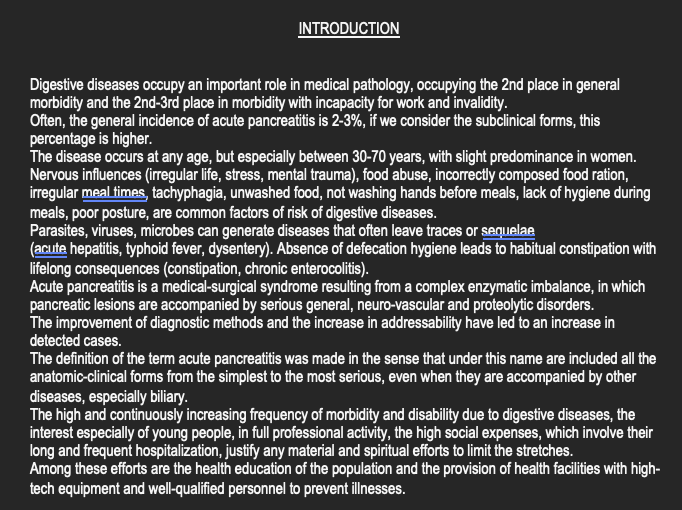Care of Patients with Acute Pancreatitis
Summary:
The document commences with an introduction that sets the stage for the forthcoming chapters. In Chapter I, foundational concepts of anatomy and physiology are presented, establishing the basic knowledge necessary to understand the human body’s complexities.
Chapter II deeply delves into acute pancreatitis, providing a comprehensive overview of its mechanisms, symptoms, and complications. As the narrative progresses to Chapter III, the spotlight is on the pivotal role of a nurse in managing and caring for patients diagnosed with acute pancreatitis. This chapter underscores the significance of nursing expertise and the unique challenges they face in this context.
Chapter IV provides insight into the nuances of preoperative and postoperative preparations, guiding medical professionals through the steps to ensure optimal patient care.
The case study section offers practical, real-world scenarios for patients with pancreatitis. With three distinct cases, readers thoroughly understand the varied presentations and challenges encountered in real-life medical settings.
Several annexes detail various medical procedures and techniques to further enhance the practical application. These range from methods of blood and urine collection, the technique of intramuscular injections, procedures for infusions, gastric surveys, and the performance of evacuation enemas.
The document culminates in Chapter V, where conclusions from the earlier content are succinctly presented, followed by a detailed bibliography to facilitate further exploration.
Excerpt:
Care of Patients with Acute Pancreatitis
INTRODUCTION
Digestive diseases occupy an important role in medical pathology, occupying the 2nd place in general morbidity and the 2nd-3rd place in morbidity with incapacity for work and invalidity.
Often, the general incidence of acute pancreatitis is 2-3%, if we consider the subclinical forms, this percentage is higher.
The disease occurs at any age, especially between 30-70 years, with a slight predominance in women.
Nervous influences (irregular life, stress, mental trauma), food abuse, incorrectly composed food ration, irregular meal times, tachyphagia, unwashed food, not washing hands before meals, lack of hygiene during meals, poor posture, are common factors of risk of digestive diseases.
Parasites, viruses, and microbes can generate diseases that often leave traces or sequelae.


Reviews